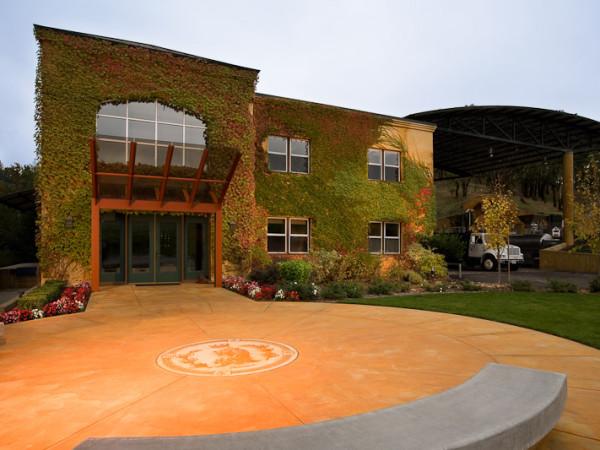It was a great wine tasting at the Fine Wine Source and it was still going strong for both The Wine Raconteur, Jr. and myself. We had already had nine different wines from Burgundy, Bordeaux and St. Helena. It was a great learning experience and we both knew that we were going to be leaving with some wonderful wines and there was still more awaiting for us.

Our next destination that our tasting was taking us to was Alexander Valley in California’s Sonoma County. Alexander Valley is considered one of the warmest parts of the County as it goes from the Russian River to the foothills of the Mayacamas mountains, which separate Sonoma from Napa. The twenty mile stretch basically covers the benchlands and the gravel soil is the perfect area for Cabernet Sauvignon. The region is known for the warm days and fog cover which helps the grapes retain acidity, a basic quality for fine wines. The gravely soil, makes the vines work harder to achieve hydration, the plant is stressed and grows less energy-sapping leaves and creates thick-skinned berries with concentrated flavor. If you have ever had the chance to taste wine grapes at harvest time, you will fully appreciate the concentration of taste and sugar. Alexander Valley has attracted some of the giants of the wine industry, as well as small artisanal winemakers as well. Along with Cabernet Sauvignon, the Alexander Valley is known for Merlot, Cabernet Franc, Chardonnay, Sauvignon Blanc and Zinfandel.
Lancaster Estate Cabernet Sauvignon Alexander Valley 2016 is from a winery that was founded in 1995. The estate has fifty-three acres of vineyards on grounds that are very similar to terroir of the Medoc and hence the winery only grows Cabernet Sauvignon, Malbec, Merlot, Petit Verdot and Cabernet Franc; and eighty-three percent is planted with Cabernet Sauvignon. They even use satellite tracking for all of the plots throughout the growing season. The grapes are hand sorted and de-stemmed to be prepared for the crush and since the winery is located in the center of the vineyards, there is usually less than one hour from harvest to fermentation tanks; and each block or plot is done separately. The grapes are cold soaked with skins for several days in Stainless Steel, and through maceration they only use native wild yeasts to ferment the wines and to maintain the terroir of the wine. Then each separate lot is pumped to its own French Oak barrels to begin the aging process in their wine caves. The wines are aged from eighteen to twenty-six months sur lie, in a mix of varied coopered barrels, seventy-eighty percent of the barrels are new each year, and they add one or two new cooperages each year as well. The wine is hand stirred in the barrels once a week to lift the lees, for the first year, then after the racking is done without raising the lees. The wines are bottled unfiltered to maintain the purity of expression. Dark fruits and some floral notes enticed the nose, while flavors of dark fruits, leather and spice lead the taste with firm tannins and complexity, even at such a young age and the finish of terroir was long with some heat that I also enjoyed. This was a beautiful bottle of wine and one that I am glad that I had the chance to try.

